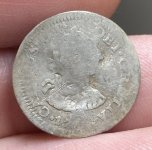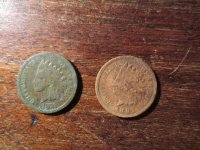A lot more small Burlington Flint flakes.
The little man is 3” tall, for size reference.
The bottom row shows a lot of color.
These are just flakes, so I’m guessing that the heat treatment was done before the knapping. (?)
I had thought that the finished point/tool was heat treated, once finished. If so, why so many colored flakes? Trying to learn, sorry to sound lost.🤷♂️

The little man is 3” tall, for size reference.
The bottom row shows a lot of color.
These are just flakes, so I’m guessing that the heat treatment was done before the knapping. (?)
I had thought that the finished point/tool was heat treated, once finished. If so, why so many colored flakes? Trying to learn, sorry to sound lost.🤷♂️
Upvote
7






